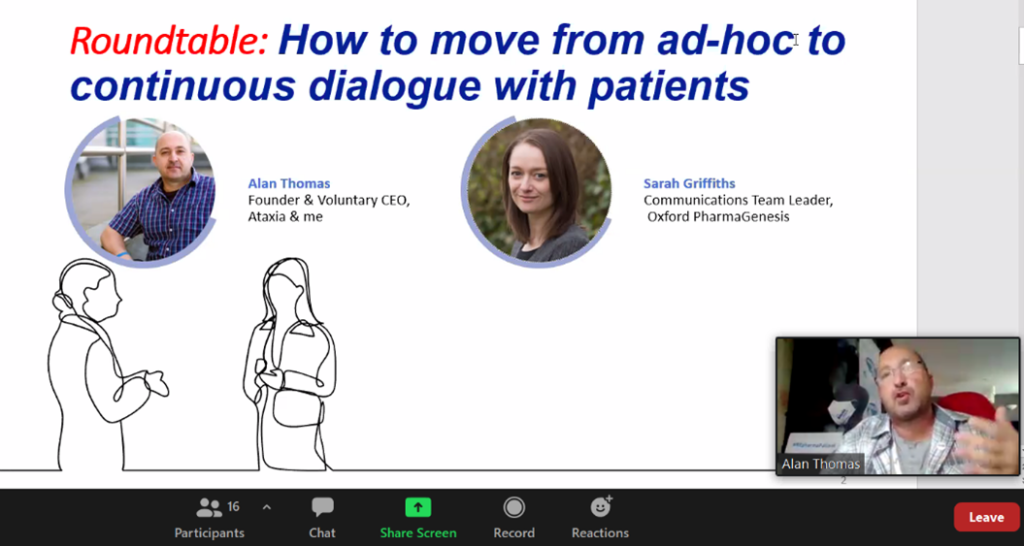Oxford PharmaGenesis was delighted to attend the recent eyeforpharma Patient Summit 2020 earlier this month. As part of the ‘new normal’, the meeting this year was virtual, and content was available on demand. This allowed multiple members of the Patient Engagement Team to attend and gain insights on the latest in the patient engagement field. In addition, Sarah Griffiths co-moderated a roundtable discussion with Alan Thomas of Ataxia and Me. The topic of ‘How to move from ad-hoc to continuous dialogue with patients’ was discussed in depth, with animated and engaging conversations between multiple patient advocates and pharma representatives.
Roundtable highlights
The overriding message from patients and patient advocates was that building trust is imperative for effective communication, which is developed through the continuity and consistency of contact with pharma companies; dialogue should not be tokenistic and ad-hoc. To understand the therapy area and issues that patients face, involvement should begin before trials or other projects are even initiated, and compensation at fair market value is expected. Barriers to continuous dialogue with pharma include no single point of contact, or multiple people moves in teams resulting in discontinuity in patient communications, which was frustrating for pharma attendees too. Regulatory barriers were identified as the biggest issue in preventing straightforward contact with patients that need to be resolved. In addition, attendees considered how patient insights can be representative of the wider patient community and avoid ‘insight bias’. The voice of patients who aren’t usually part of the conversation, or are involved in patient groups, could be captured by tailoring communications and involving carers. Some patient groups struggle to communicate with members who have access barriers or prefer contact via phone or letter. Increasingly, patient groups are supporting other patient advocates in different therapy areas to give them a bigger platform. Looking to the future, the potential for wearables was flagged, which could facilitate continuous contact and connectivity, and could support the generation of broader patient insights.
Other key lessons from the summit
Some of the other resonating discussion points and lessons included:
- Pharma needs to engage with patients from the start in preclinical research priority setting and clinical trial design.
- There is significant power in organized patient advocacy for lobbying funding bodies and driving novel research, especially in rare diseases.
- Researchers should work closely with patient organizations and seek their guidance regularly, using the experience and insight they can offer to build patient engagement strategies.
- Data protection is a concern for patients, so it is important to be clear about how the patient’s data will be used.
- Interjecting into patient discussions will only succeed in shutting down conversations; those who are engaging with patients need to develop a relationship by listening.
- Patients are co-creators, not marketing segments, and pharma needs to treat patients as such.
Thanks to the flexible virtual format, it was great for multiple members of the Patient Engagement Team to attend the Virtual Patient Summit and to hear about new innovations in the field of patient engagement.

